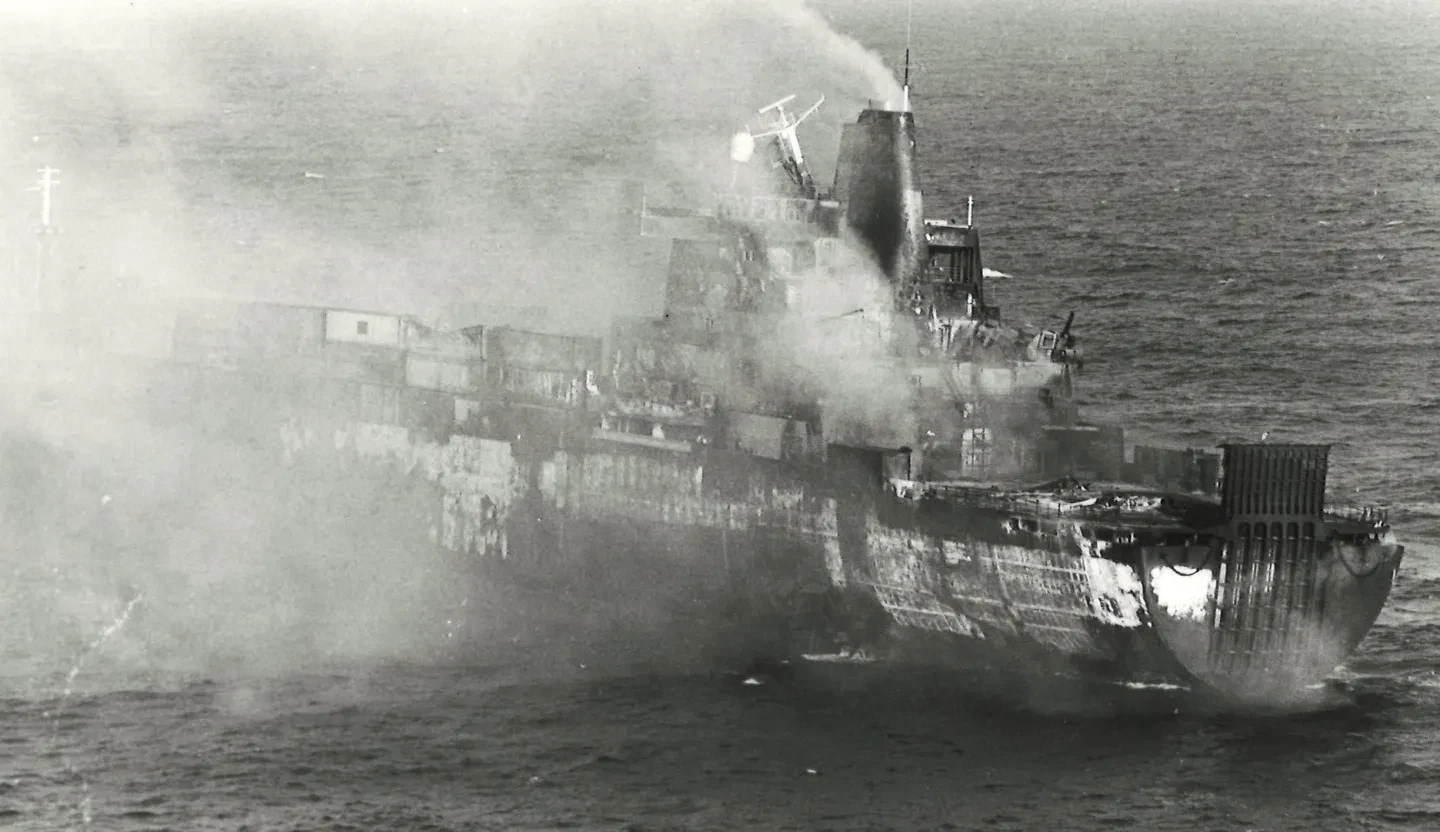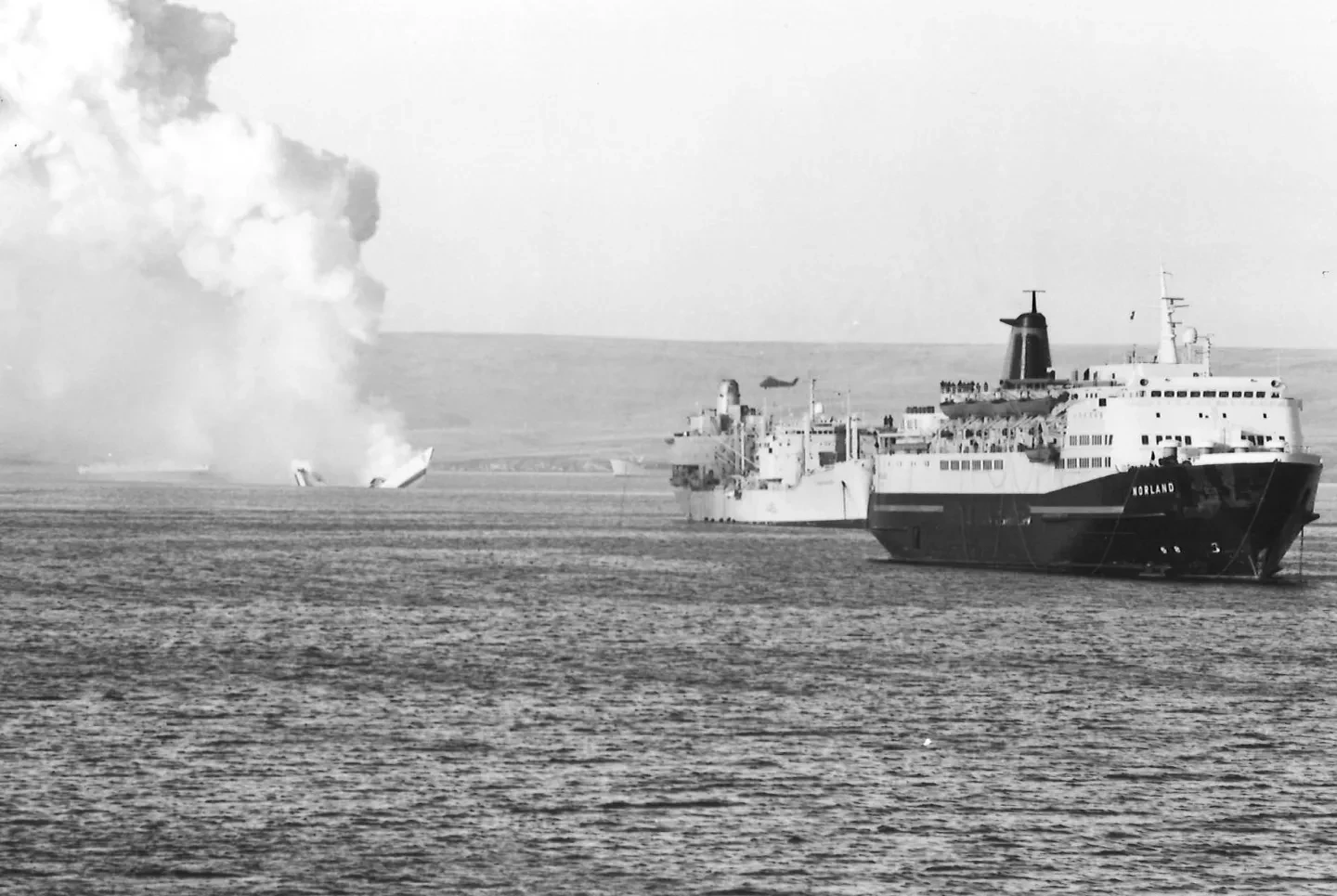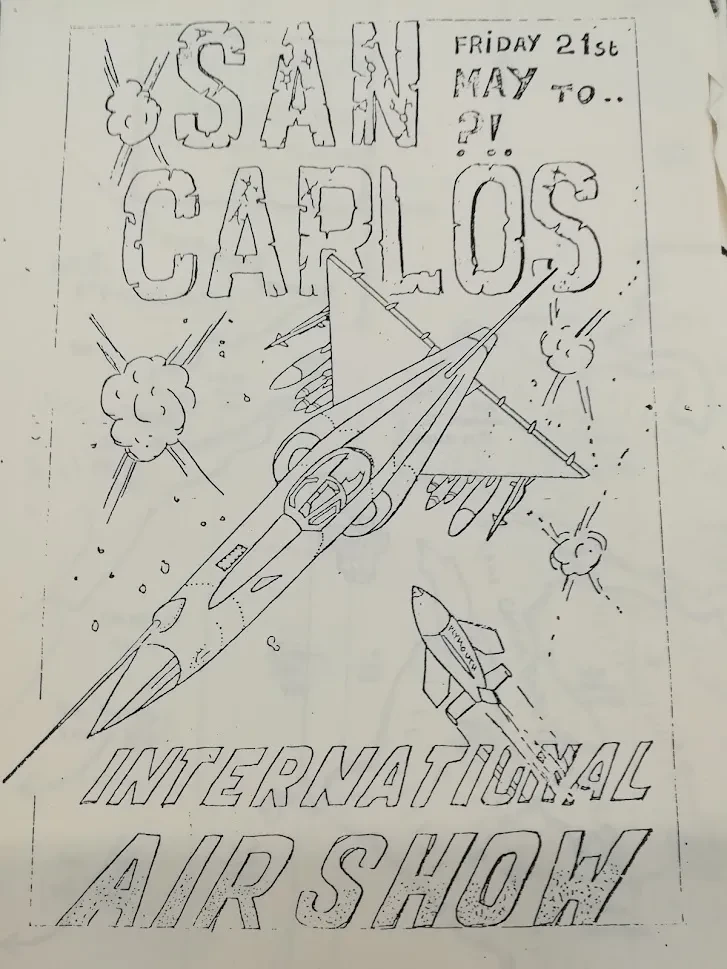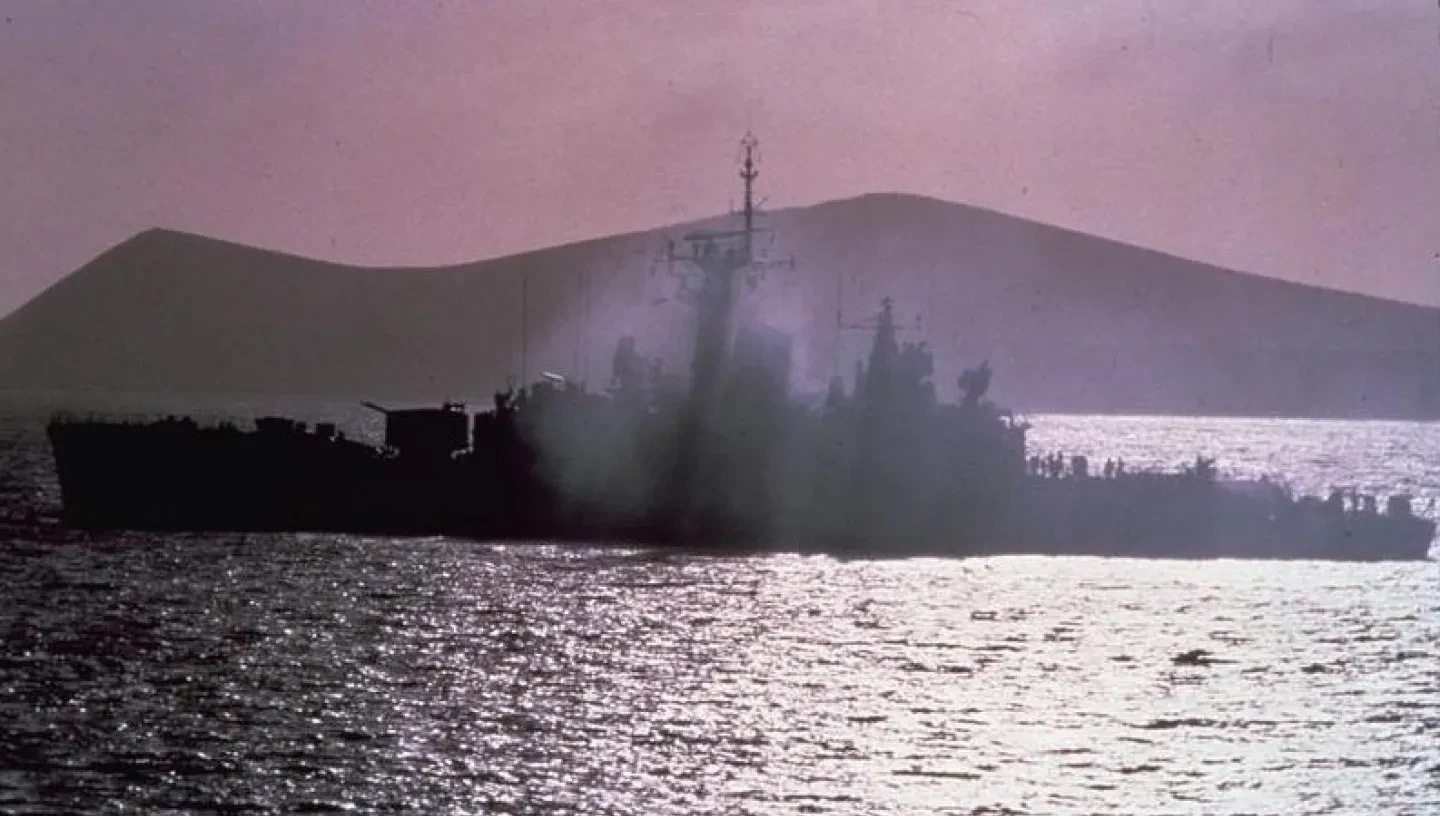
2022 marks the 40th anniversary of the Falklands conflict, a 74-day conflict between Argentine and British forces that resulted in more than 3,000 casualties. Curator Andrew Choong examines the war from a naval perspective, with personal testimony from both sides.
Early in the morning of 2 April 1982, Argentine Marines conducted amphibious landings in the vicinity of Port Stanley, the largest town and capital of the Falkland Islands.
The landings were briefly resisted by the small garrison of Royal Marines, but Argentine numbers told. Within a few hours, the islands had been secured.
Argentina’s dictatorial ruler General Leopoldo Galtieri was confident that British economic and military weakness would preclude any effective response. In a discussion with US diplomat Vernon Walters, Galtieri dismissed any suggestion that Margaret Thatcher’s government would enter hostilities with the remark, “That woman wouldn’t dare!”
It was an unfortunate error of judgement, for on 5 April the first elements of a British naval task force began making their way towards the South Atlantic.
This would ultimately comprise a formidable assemblage of over a hundred warships, auxiliaries and STUFT. The latter stood for Ships Taken Up From Trade, civilian vessels and their crews requisitioned for the war effort and soon to find themselves in harm’s way.
Thus began the Falklands War, a short yet costly conflict, made all the more tragic by the fact that neither side really wanted it.
Personal accounts from the Falklands War
Carlos B. Castro Madero was an officer aboard the Argentine cruiser ARA General Belgrano, and had been with the ship for three months when operations against the Falklands commenced.
He remembered that “although we knew there was something going on, we knew nothing specific. All the Malvinas planning was done totally in secret, so we were really surprised by what happened.”
Taken to extremes, this level of operational security could, and ultimately did, hinder effective cooperation between the Argentine navy, army and air force.
Confusion of a rather different sort reigned among some ships of the British task force, as the Royal Navy’s ships made the rapid transition to a war footing.
In his diary entry for 12 April, Ken Napier of HMS Plymouth recorded the improvisation required to store his ship for an extended deployment.
"We got plenty of meat (frozen): less tinned than we wanted," he wrote. "This was stored throughout the ship, including some on the upper deck, 3 naval stores, the catering office itself and sacks in the Senior Rates Dining Hall.”
British and Argentine naval forces
Although the Falklands were to be the scene of bitter fighting ashore, the role of naval power was crucial. The Argentines possessed formidable naval forces that included an aircraft carrier, a cruiser, submarines and a number of small craft. These were supported by significant air assets from nearby bases.
The British brought a somewhat more powerful fleet to bear, but this advantage was nullified by their much smaller number of aircraft, the need to protect the logistical support and transport ships in the task force, and lastly the fact that they were operating at a distance of almost 4,000 miles from Ascension Island, their nearest base.
From 21 May, British troop landings made it necessary for British ships to operate close inshore, adding to the significant risk posed by air attack.
The Falklands War at sea
For the men involved in this bitter ten-week conflict, life at sea seemed to revolve around a state of endless readiness punctuated by short, intense moments of terrifying combat.
Madero recalled the atmosphere early in the campaign: “I have to say the men responded very well. We knew we were on a very risky operation so we trained very hard so we could do well for our country.”
A more constant nuisance than the enemy was the climate, as noted by Napier: “The weather changes extremely quickly, going from calm with sun to a full blizzard and gale in an hour…the wind was very cold and wild…I have got quite tanned on my face from the sun and wind.”
Initially wary of engaging the British task force, the Argentines focused solely on air attacks.
Towards the end of April, it was felt that a naval commitment had become essential. The Argentine aircraft carrier ARA 25 de Mayo and the cruiser ARA General Belgrano put to sea with their escorts, intending to execute a pincer movement against the British. Unsuitable conditions prevented the carrier from launching her aircraft, so the operation was cancelled.
The sinking of General Belgrano
On 2 May, ARA General Belgrano was attacked and sunk by the submarine HMS Conqueror.
According to Madero, “there was an incredible explosion…I went up to the main deck and helped injured people to get out… In ten minutes the ship was listing 60 degrees to port, so we thought the ship would sink at any moment. It was like an impossible dream.”
For the men who escaped the sinking ship, the unforgiving conditions offered no comfort.
“My legs were frozen and I was very cold," Madero said. "I was thinking, but my muscles wouldn’t act like I wished. I started thinking I was going to die.”
Madero was one of 772 survivors out of the ship’s total complement of 1,095. The destruction of the Argentine navy’s most powerful surface ship represented a significant tactical and strategic victory for the British, effectively ending overt Argentine naval activity. However, it also generated powerful political and social shockwaves that continue to generate controversy today.
Establishing naval superiority did not grant immunity from air attacks, and from late May onwards more British ships found themselves facing these in the waters around San Carlos Bay, which soon acquired the appropriate nickname ‘Bomb Alley’.
Napier’s account of 23 May recorded an experience that would become typical.
A series of raids from Skyhawks and Mirages, dropping bombs. Our CAP [Combat Air Patrol] is having less luck today. ANTELOPE, who only arrived that morning, was hit by a bomb which did not explode, and several other ships had near misses. The BRILLIANT was bracketed by three bombs. None of the troop ships were damaged at all…Morale remains high, although we are all getting very weary with only a few hours sleep each night. Throughout the attacks, ship’s life is going on…the men have done very well despite their tiredness…We have now not set foot on shore since 29 March.”
Ken Napier of HMS Plymouth
In general, despite mounting damage and casualties, the Royal Navy warships maintained an effective air defence over their more vulnerable charges.
However, there were occasions when failures in coordination led to catastrophe, the worst in terms of casualties being the bombing of the landing ships Sir Galahad and Sir Tristram on 8 June.
The end of the Falklands War
The surrender of the last Argentine ground forces in the Falklands on 14 June came as a relief, although it was some time before the naval task force could begin to disperse. The fighting had resulted in 1,030 British and 2,306 Argentine casualties on land, sea and in the air.
In addition to the physical ravages of war, many men on both sides would struggle to cope with the mental trauma of their experiences.
When HMS Plymouth was finally cleared to depart 11 days later, Napier – with some pride – recorded his impressions of the state of the men.
“It has been a very testing period for the whole ship, and we have done much better than some other ships, who with less damage, have gone home early, when their limited support could have been used. The ship’s company have reacted (apart from a few who have been terrified, and let it show) extremely well to the continuous stress of the last few weeks…Nevertheless, it will be very welcome to be on our way: for most of the crew it will be their 85th day at sea with no time ashore at all…”
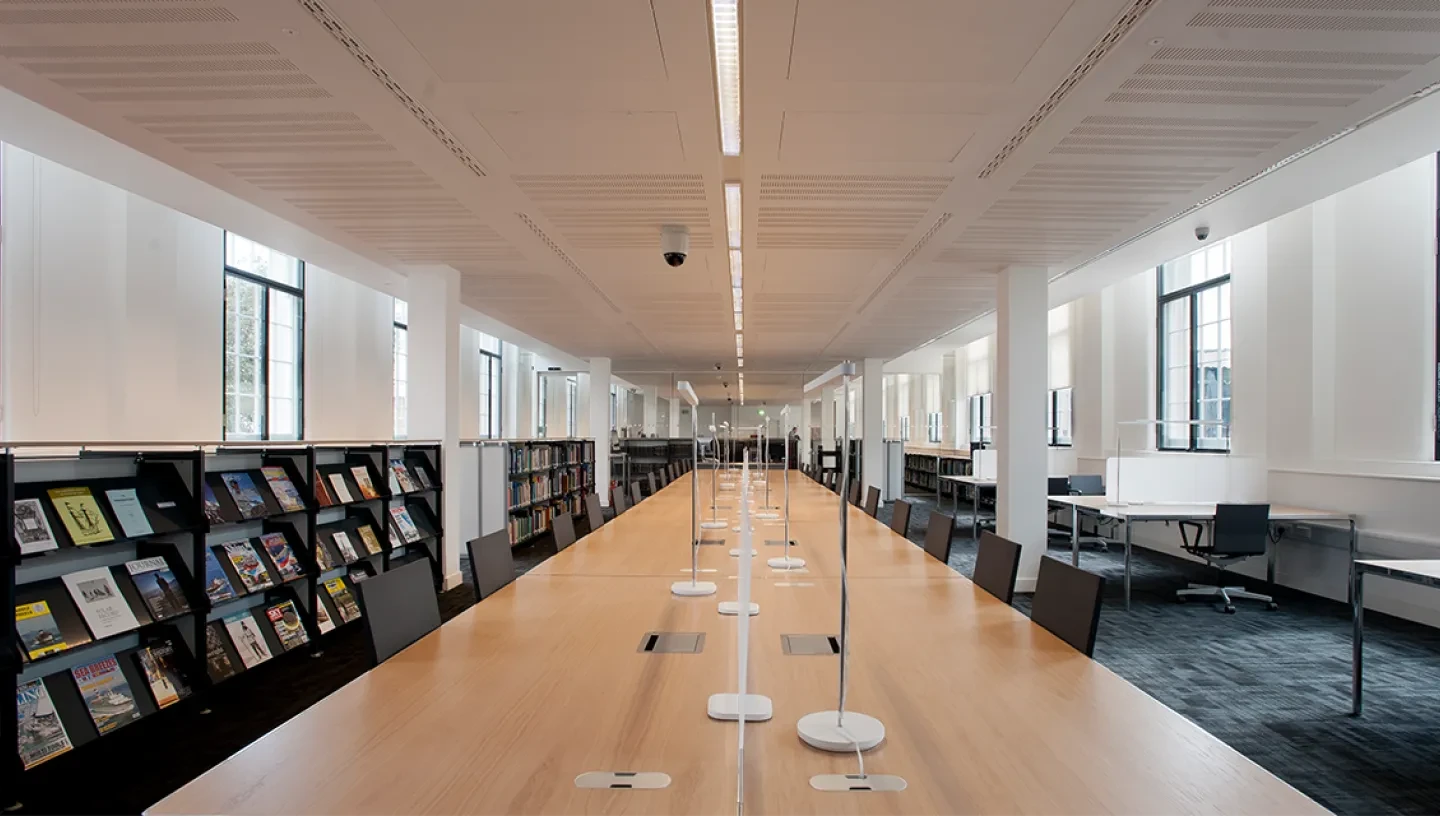
Find out more
Main image: HMS Plymouth on fire after air attack on 8 June 1982. Courtesy of Imperial War Museums (© IWM FKD 1214)
